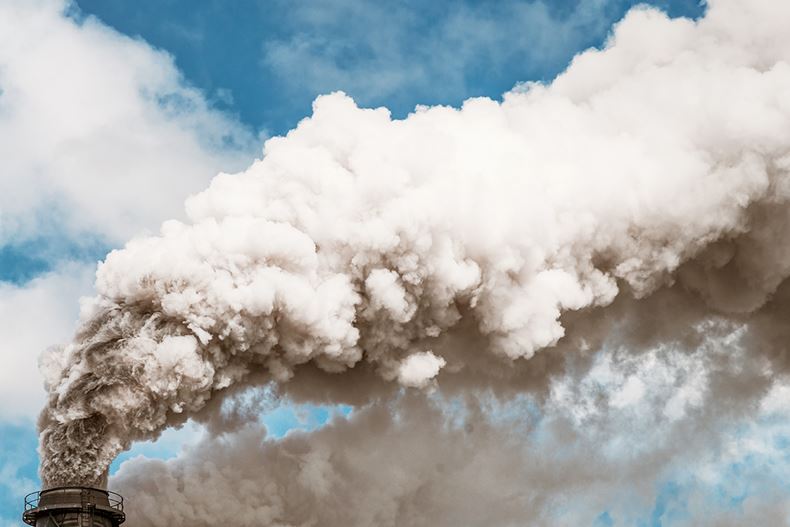|
At the top of the list of environmental bogeymen are the energy companies that burn and produce fossil fuels. Power generation accounts for more than a quarter of global greenhouse gas (GHG) emissions. Beyond the factory gates, the energy sector has a much bigger impact. After accounting for end uses, such as petrol-powered cars to gas heating, energy is responsible for nearly three-quarters of GHGs. The damage done by this industry is not limited to climate change. Power generation and energy use are massive contributors to air pollution. This is widely believed to be the biggest cause of death on the planet. The World Health Organization estimates that air pollution is linked to about 4.2 million deaths every year. Energy transition is one of the six themes monitored as part of Fix the Future s environment and climate change megatrend. ESG: enemy number one
The traditional approach to responsible investing has been to shun businesses that are deemed to do wrong. Exclusion remains an incredibly popular strategy for funds with environmental, social and governance (ESG) objectives. The 2020 Global Sustainable Investment Review estimated that exclusionary strategies accounted for about $15.9tn of the world s $35.3tn sustainable investing assets. The energy industry has been one of the chief targets. ADVERTISEMENT SCROLL TO CONTINUE WITH CONTENT A big consequence of divestment for traditional energy players is that it increases their cost of capital: a fitting punishment, one may feel. But this can make it harder for these companies to focus on and fund the transition to renewables. It also encourages the dirtiest assets to slip into private hands, away from the scrutiny of public markets. There is a growing recognition that turning one s back on a problem is not normally the most effective way to help solve it. Russia s invasion of Ukraine and the accompanying rise in oil and gas prices have highlighted the short-sightedness that exclusionary strategies can be guilty of, while also emphasising the importance to countries of having a diverse mix of energy sources. The presence of engaged shareholders encouraging the move from fossil fuels to renewables can act as a far more positive influence than exclusion. By going green, energy companies can provide a double environmental whammy and the potential for better shareholder returns. With a transition business, when it deploys more megawatts of renewable power that s going to replace coal-fired power from a positive impact point of view, it can be seen to be doing more, says elite manager Alex Araujo, who runs the M G Global Listed Infrastructure and Global Themes funds. When all of that happens you normally get quite a nice re-rating, too.
The decarbonisation linchpin

The energy sector s transition to renewables is the linchpin for environmental progress in many other high GHG-emitting industries, such as transport, real estate and heavy industry. These sectors are seeking to lower their carbon footprints through electrification.
This can only be meaningful if the electricity they use comes from low- or zero-carbon sources. Increased regulation and moves toward carbon pricing are being used to encourage energy companies to take the vital first step in achieving the Paris Agreement climate goals. In Europe, governments are looking to significantly accelerate the transition to renewables, including nuclear, to reduce reliance on Russian gas.
Not only do energy companies need to rapidly make electricity greener, but they also need to produce and distribute a lot more of it. The International Energy Agency (IEA) forecasts that the global energy mix will need to shift from just over one-fifth electricity to about half by 2050.
This is going to cost a lot of money. New infrastructure will also be needed. And it is likely to significantly boost demand, and prices, for many metals, should supply not keep up.
The estimated $750bn spent on clean energy technologies and efficiency worldwide in 2021 is about half the annual spend that the IEA believes is needed this decade to maintain temperatures well below a 2C rise. It is about a third of what is needed to be on track for 1.5C.
But the availability of money is not what is currently holding investment back. It is a scarcity of projects that is the major limitation. The transition can only go so quick, says Araujo. The bottleneck is the supply chain.
Plentiful amounts of cash chasing limited opportunities is a dangerous combination for investors. Such situations tend to result in returns being squeezed. As well as value destruction, this could erode the momentum that has built up behind the transition.
Something we look at closely is whether oil majors, in order to increase their share of green revenue, will be willing to do it at almost any price? says elite manager Marcus Bj rkst n, who runs the Fondita Sustainable Europe fund. There are some signs of this from certain auctions.
Greener faster

The staggering efficiency gains in renewable technologies are a reason for optimism. Every dollar spent on wind or solar today buys about 10 times as much power as it did 10 years ago. When it comes to renewable energy, it has served investors well to be optimistic and bold.
The war in Ukraine also looks likely to encourage governments to green-light more projects as they focus on the need for energy security above their more parochial concerns.
There are plenty of opportunities in renewables beyond wind and solar, too. Some of these may offer more scope for profit. This includes the development of green hydrogen hubs to convert and store zero-emission electricity. This form of power could potentially be distributed using existing gas pipeline networks. Hydrogen could prove a vital storage solution to address the on-off nature of renewable energy production. It may also prove the best way to decarbonise key areas in industry, heavy transport, and buildings.
Carbon capture is another nascent technology that is likely to play a vital role. And after decades of being scorned, the low-carbon attraction of nuclear energy is being considered in a new light. Other energy alternatives, such as heat pumps, are also expected to be important to a net-zero future.
Long lead times on many of these projects also mean the switch in energy companies planning and spending needs to happen now to reduce the risk of stranded assets assets that become worthless due to changes in regulation or competition.
Turing ESG s bogeyman into the planet s saviour could prove a very profitable business for canny investors.
Find out which energy transition companies are attracting the biggest backing from elite fund managers.
|